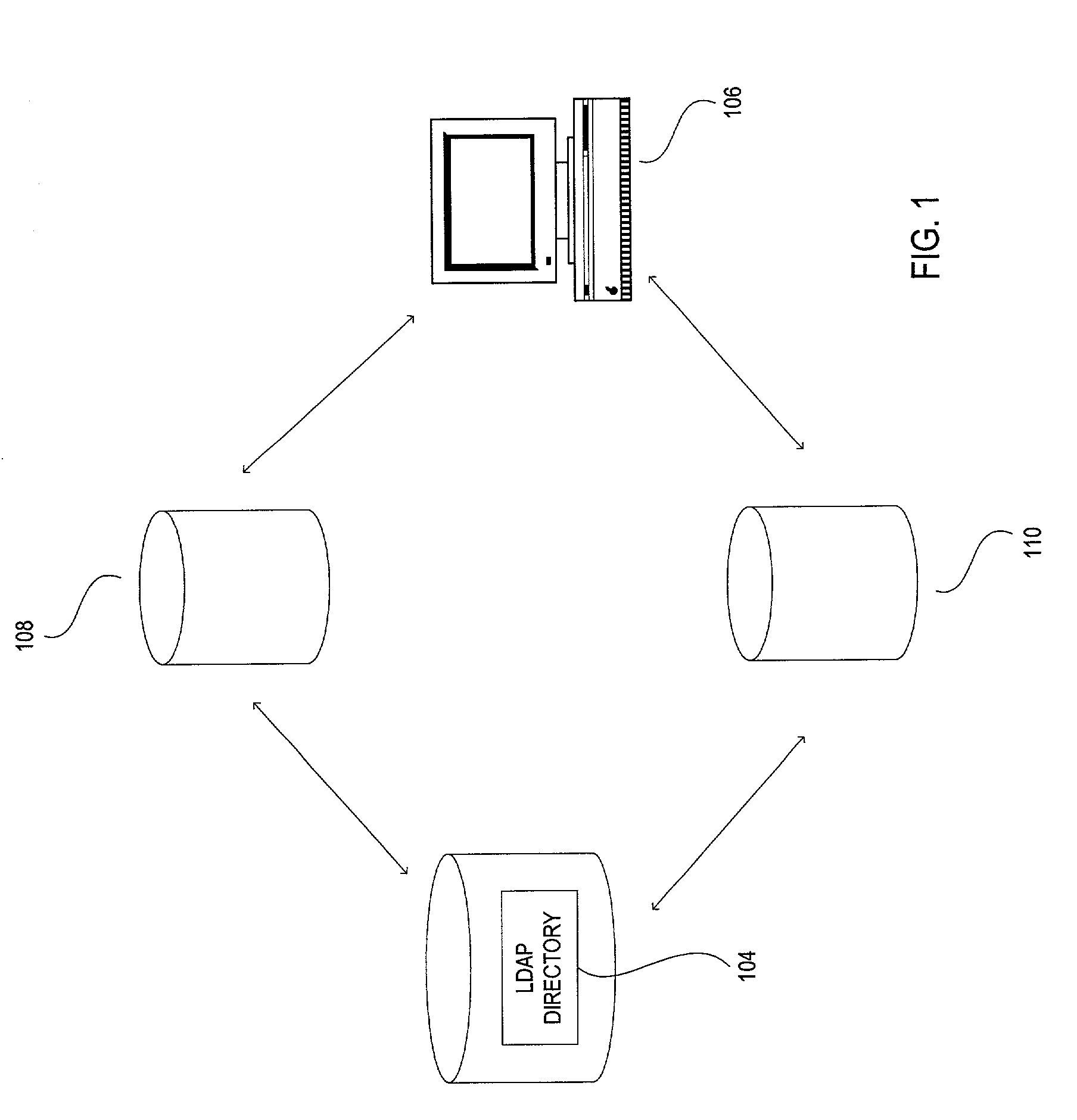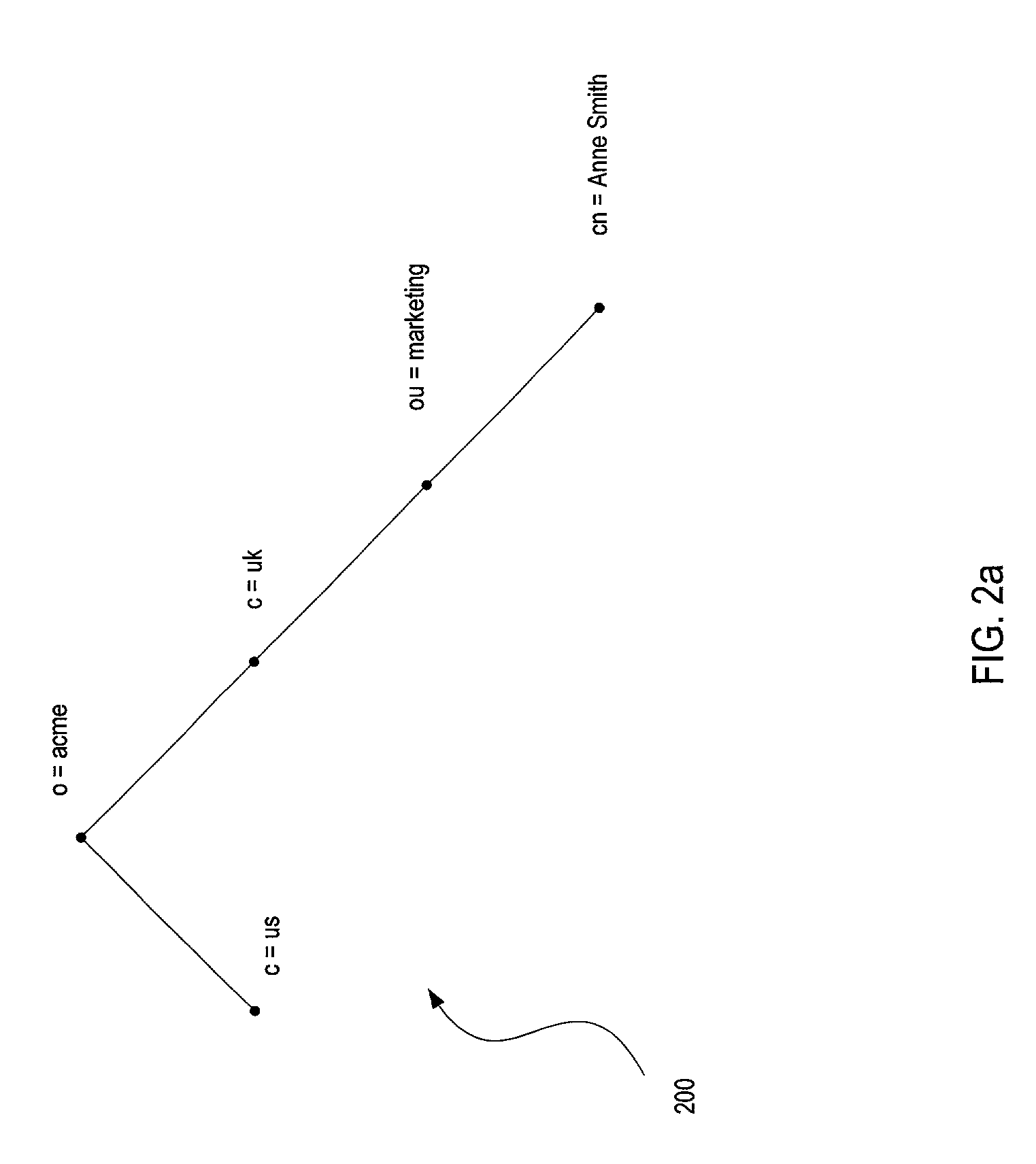Method and system for management of access information
a technology for access information and management methods, applied in the field of computer systems, can solve problems such as increased maintenance costs, decreased efficiency, and complex tasks, and achieve the effect of improving enterprise security and lowering administrative costs
- Summary
- Abstract
- Description
- Claims
- Application Information
AI Technical Summary
Benefits of technology
Problems solved by technology
Method used
Image
Examples
example acl implementation
[0083]This section provides syntax examples for ACLs for an installation where the directory context (which in an embodiment is the parent entry of the Administrative Context or “AdminContext”) is represented as . DC could be any context in the directory; for example, it could be “c=uk,o=acme” in FIG. 2b. The following lists some example access control items that may be put into place. The example ACLs are meant to illustrate typical scenarios where permissions may be granted to certain groups, such as the administrative groups listed above.
[0084]For the administrative context (CN=AdminContext,), this first ACI sets the default privileges for the entire context, and it allows members of the Context administrative group full privileges on the context. Others will obtain browse permission only by default on the objects in the context. This ACI preferably resides at the administrative context.[0085]ACI: access to entry by group=“cn=ContextAdmins,cn=AdminContext,” (browse,add,delete) by...
PUM
 Login to View More
Login to View More Abstract
Description
Claims
Application Information
 Login to View More
Login to View More - R&D
- Intellectual Property
- Life Sciences
- Materials
- Tech Scout
- Unparalleled Data Quality
- Higher Quality Content
- 60% Fewer Hallucinations
Browse by: Latest US Patents, China's latest patents, Technical Efficacy Thesaurus, Application Domain, Technology Topic, Popular Technical Reports.
© 2025 PatSnap. All rights reserved.Legal|Privacy policy|Modern Slavery Act Transparency Statement|Sitemap|About US| Contact US: help@patsnap.com



